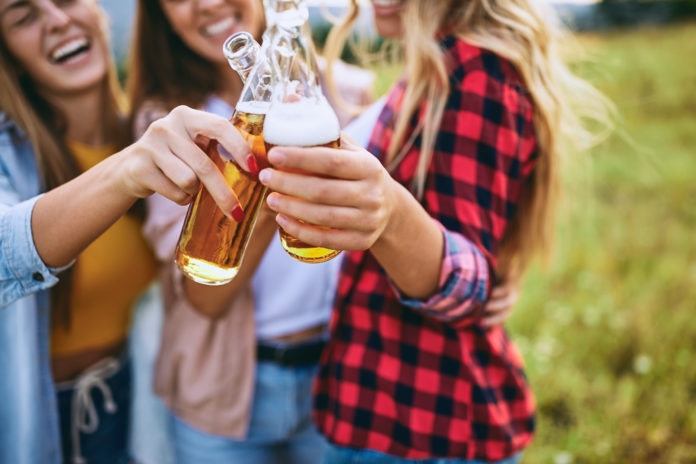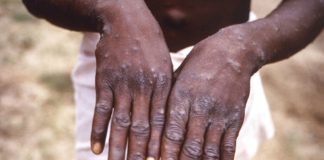DENVER (CBS4)– The Healthy Kids Colorado Survey shows that more young people are having a tougher time accessing drugs and alcohol, which means they are consuming less. The Colorado Department of Public Health and Environment said more than 100,000 youth responded to the voluntary survey.

(credit: Getty Images)
“Not surprisingly, the data indicate that youth have been struggling during the pandemic, as we all have,” said Jill Hunsaker Ryan, executive director, CDPHE in a statement. “But, there are many positive aspects, including a reduction in substance use and perceived access to drugs, alcohol and cigarettes. Importantly, the survey points to the need to support and increase protective factors for youth of color and LGBTQ+ youth.”
Significant key findings from the 2021 statewide high school results include:
• 40% of youth experienced feelings of depression in the past year, up from 35% since the last Healthy Kids Colorado Survey was administered in 2019.
• 51% of youth felt daily stress more often during the COVID-19 pandemic.
• The percentages of youth who currently use substances decreased—including alcohol (24%, down from 30%), marijuana (13%, down from 21%), cigarettes (3%, down from 6%), electronic vapor products (16%, down from 26%), and prescription pain medications without a prescription (6%, down from 7%).
• Youth felt it is harder to access substances, like alcohol, marijuana, cigarettes, electronic vapor products, and other drugs, than in prior survey years.
• Youth reported increases in the perceived risk of harm by the daily use of substances.
Health officials said that there are disparities for youth of color and LGBTQ+ youth in the state.

(iStock/Getty Images)
While the percentage of youth who have seriously considered (17%), planned (13%), and attempted suicide (7%) in the past year has not changed since 2015, disaggregated 2021 Healthy Kids Colorado Survey data show:
• 23% of genderqueer/nonbinary youth attempted suicide in the past year, compared to 8% of their female peers and 4% of their male peers.
• 20% of bisexual youth, 18% of gay/lesbian youth, and 11% of asexual youth attempted suicide in the past year, compared to 4% of their heterosexual peers.
• 26% of transgender youth attempted suicide in the past year, compared to 7% of their cisgender peers.
• 10% of Multiracial youth attempted suicide in the past year, compared to 7% of their white peers.
While the percentage of youth who were exposed to secondhand smoke or vapor at home in the past week decreased from 19% in 2019 to 16% in 2021, disaggregated data reveal that:
• 23% of genderqueer/nonbinary youth were exposed to secondhand smoke or vapor at home in the past week, compared to 16% of their female peers and 14% of their male peers.
• 24% of bisexual youth, 22% of gay/lesbian youth, and 20% of asexual youth were exposed to secondhand smoke or vapor at home in the past week, compared to 14% of their heterosexual peers.
• 27% of transgender youth were exposed to secondhand smoke or vapor at home in the past week, compared to 16% of their cisgender peers.
While the percentage of youth who experienced hunger in the past 30 days due to lack of food at home decreased from 15% in 2019 to 12% in 2021, disaggregated data reveal that:
• 18% of genderqueer/nonbinary youth experienced hunger in the past 30 days, compared to 12% of their female peers and male peers.
• 18% of gay/lesbian youth experienced hunger in the past 30 days, compared to 11% of their heterosexual peers.
• 20% of youth unsure about their transgender status experienced hunger in the past 30 days, compared to 12% of their cisgender peers.
• 24% of Black/African American youth, 20% of American Indian/Alaska Native youth, and 15% of Hispanic/Latino/a/x youth and Multiracial youth experienced hunger in the past 30 days, compared to 10% of their white peers.
Similarly, 65% of youth felt like they belong at their school (a new question in 2021), but disaggregated data reveal that:
• 37% of genderqueer/nonbinary youth felt like they belong at their school, compared to 63% of their female peers and 69% of male peers.
• 49% of bisexual youth, 48% of gay/lesbian youth, 48% of asexual youth felt like they belong at their school, compared to 71% of their heterosexual peers.
• 38% of transgender youth felt like they belong at their school, compared to 66% of their cisgender peers.
• 61% of Hispanic/Latino/a/x and Multiracial youth feel like they belong at their school, compared to 68% of their white peers.








